Winner of the Honour Award for the 2023 WLA Awards – Built Urban Design category
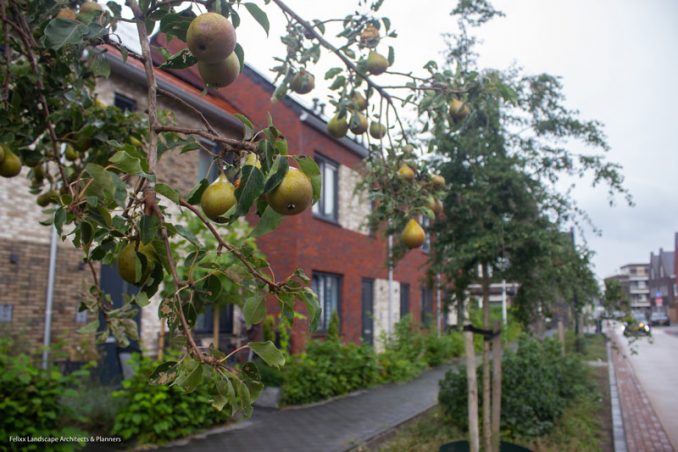
How do you design a new neighborhood in such a way that it meets the urban challenges we now face?
Rijnvliet Edible Neighborhood (REN) is a new residential area in Utrecht, part of the Leidsche Rijn expansion that provides 1000 new ground-based dwellings. The project breaks new ground in urban planning by using participatory design to realize an entire new city district around accessible urban agriculture. Utrecht municipality aimed to achieve a healthy future for the city by providing high-quality public green space. In the development process of Rijnvliet, Health was placed at the center of city development by weighing all decisions on their impact on citizens’ health.
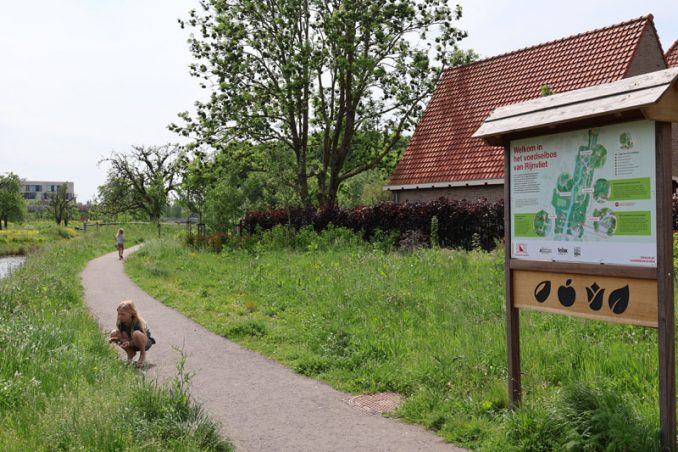
Initiated by local residents, the public space in the area is designed as an edible, educative landscape. The layout, based on the principles of food forestry, was developed in a participatory co-design procedure with residents, experts and the municipality. This has resulted in a public space design where all the greenery is edible for humans or animals.
“Rijnvliet, Edible Neighborhood, has broken new ground in urban planning working from the grassroot level up. The ecological project should be held up as an example of how to create new neighbourhoods for people, and for biodiversity. It is clear that this has not only created a sustainable future but an excellent quality of life and sense of community.”
Edward Strasser (CEO Innovation in Politics Institute)
Participation
The initial idea of an urban food forest came from local residents in the neighborhood next to the new urban planning area. The local government embraced the idea and continued interaction with the active citizens during the planning. Residents were involved in the design from an early phase through an active participatory process. By making the performative aspects of the public space visible and understandable, users will value its ecosystem services and play an important role in protecting it.
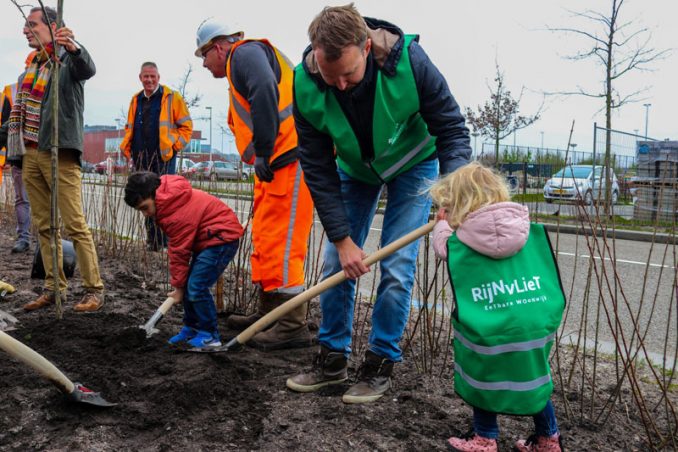
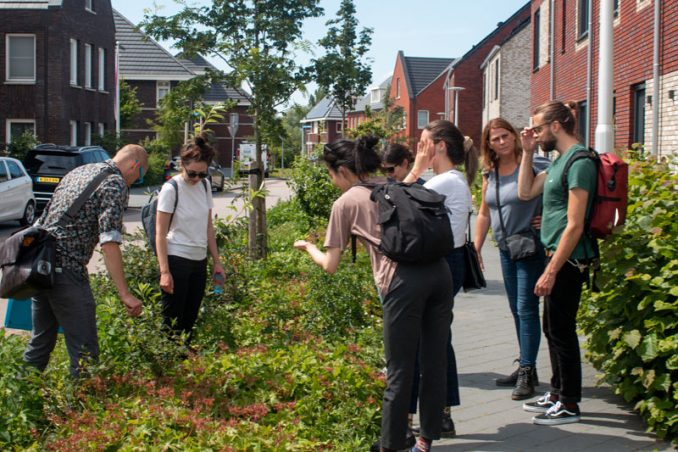
Derived from the strengthened resident engagement, a number of educational, recreational, and (nature) inclusive initiatives were set up. These are evolving initiatives that continuously add new values to the initial design.
Food Forest
The public space of Rijnvliet consists of a 15ha foodforest with more than a thousand (fruit)trees and 220 different (sub)species of edible plants, herbs & shrubs. The foodforest is built up with multiple layers of plants, forming an integrated ecosystem.
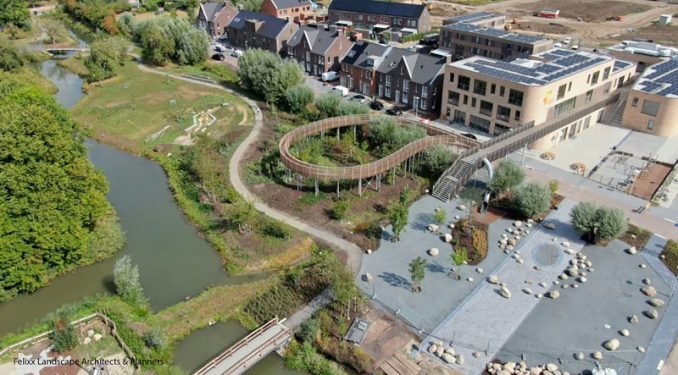
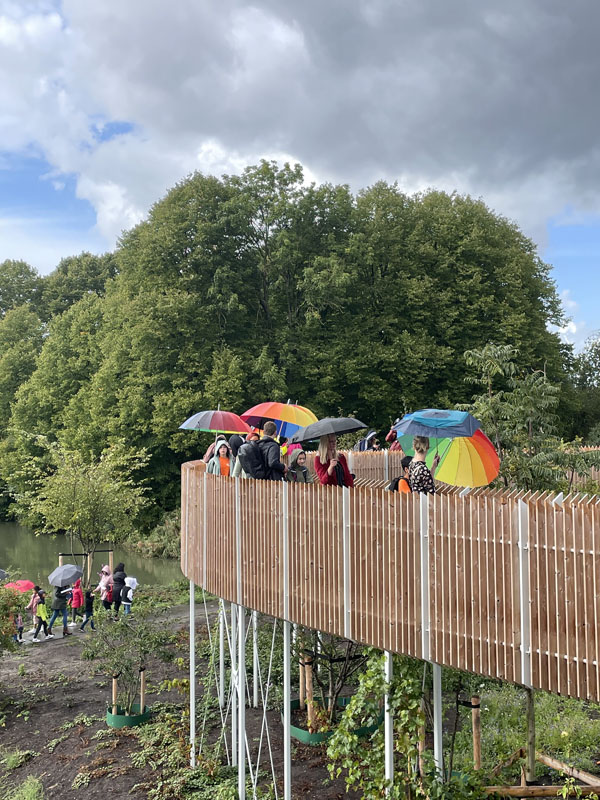
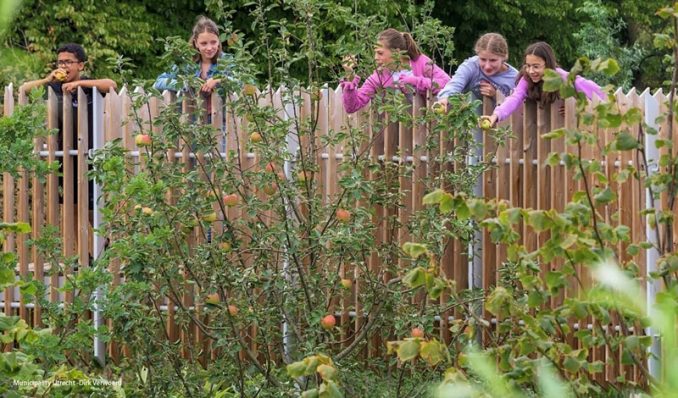
The different vegetation types and species attract insects and organisms that enforce each other. There are seven layers:
- The canopy, consisting of original and planted large trees.
- Low trees, consisting of smaller trees or half-standards.
- Shrub layer of fruit and berry bushes.
- Herb layer of multiannual vegetables and herbs.
- Soil covers, a layer of plants that spread horizontally.
- Underground layer of plants that produce roots or tubers.
- Climbers, a vertical layer of climbing plants.
The entire district is embedded within a productive landscape, integrating three values: food production, usage and nature. Therefore the principles to create a ‘foodforest’ are merged with the functionalities required for the surrounding residential areas, providing a multiplicity of uses and unique access to nature for all generations. The abundant green and blue spaces are harmoniously blended with the built environment. The quality of life is enhanced by providing a rich human experience, high biodiversity and extensive habitat for birds, bats and other species.
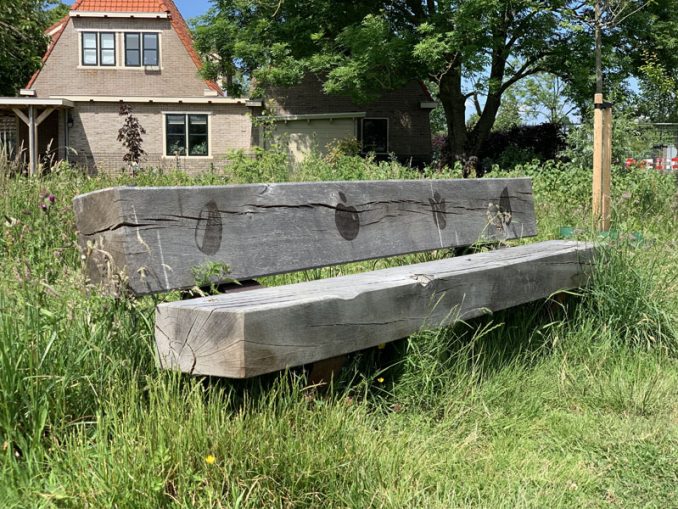
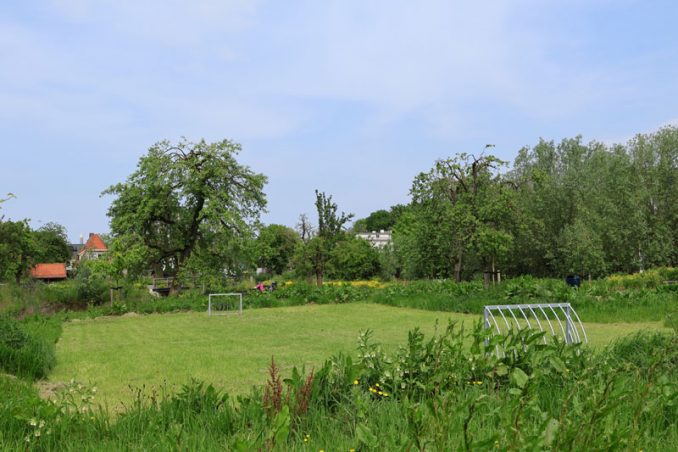
Urban Agriculture
Rijnvliet Edible Neighborhood uses Nature-based Solutions to address climate change and provide multiple social, economic, and environmental co-benefits. One of the applied solutions is Urban agriculture, that plays an important role in sustainable urban development and helps urban residents to reconnect with nature. The food forest, as a form of urban agriculture, also enhances ecosystem services such as water management, heat reduction and air purification. It thereby realizes a sustainable urban future for people, animals and nature all together.
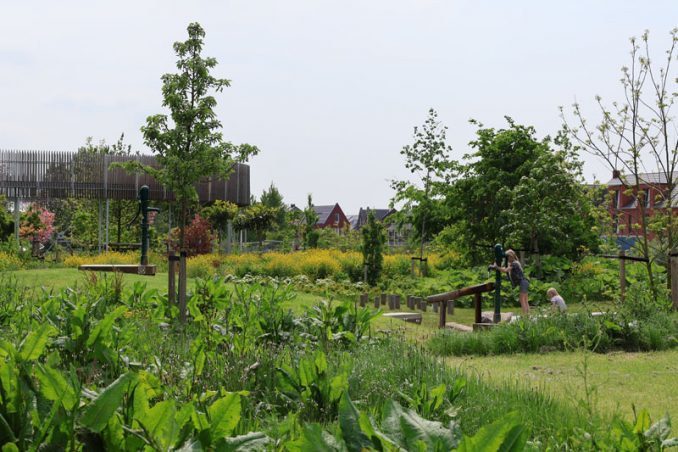
By involving from the start so many experts from different fields, together with local residents, Rijnvliet was able to become something more than your everyday neighborhood. This multiangled approach made REN an exceptional project in which a new emerging form of urban agriculture offers enormous opportunities for making our cities more sustainable. The public jury of European citizens praised the cooperation between the neighborhood and the municipality and awarded the first prize of the Innovation in Politics Award 2021, in the category ‘ecology’ to the municipality of Utrecht.
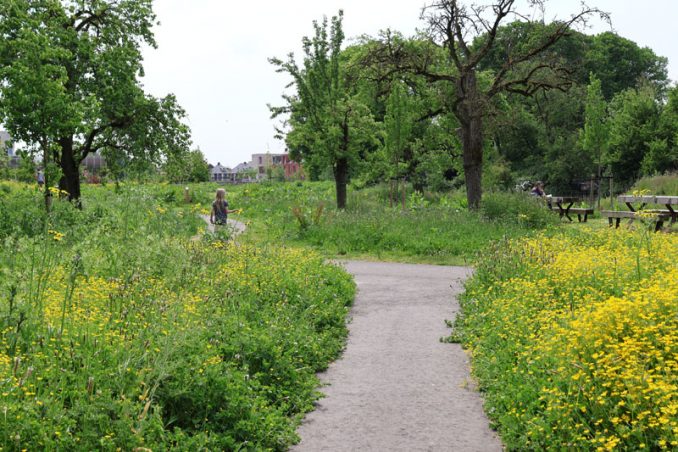
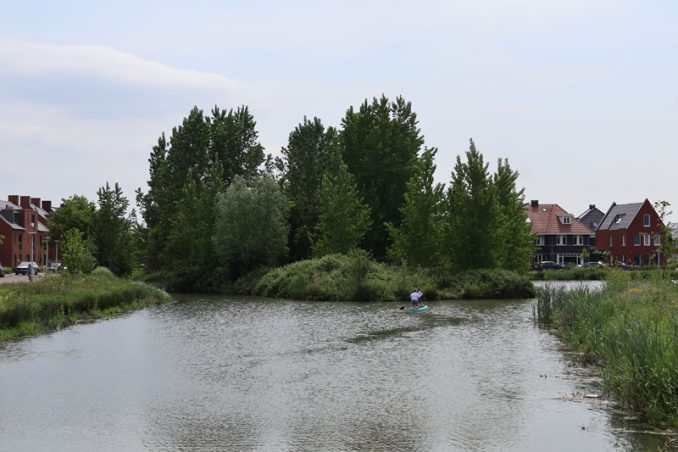
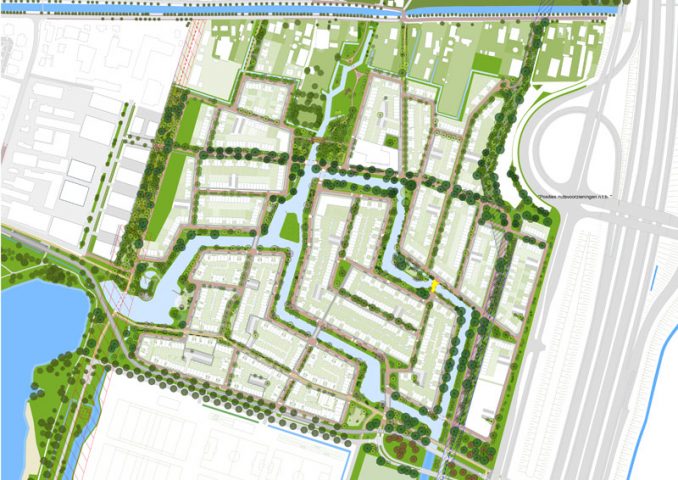
Rijnvliet Edible Neighborhood
Designer Credit:
De Zwarte Hond (Masterplan Development)
Felixx Landscape Architects and Planners (Landscape Design, Public Space)
Xavier San Giorgi – Æ Food Forestry Development (Development Food Forest)
Van Wanrooij developer (Developer)
Client: Municipality Utrecht, The Netherlands
Collaborators/Other Consultants:
De Zwarte Hond, Xavier San Giorgi – Æ Food Forestry Development, Van Wanrooij developer, municipality of Utrecht, Rijnvliet local residents, Stichting de Groene Longen van Rijnvliet (green lungs foundation), Metaalkathedraal (Ecological society)
Image Credits: ©Felixx Landscape Architects and Planners unless otherwise captioned
